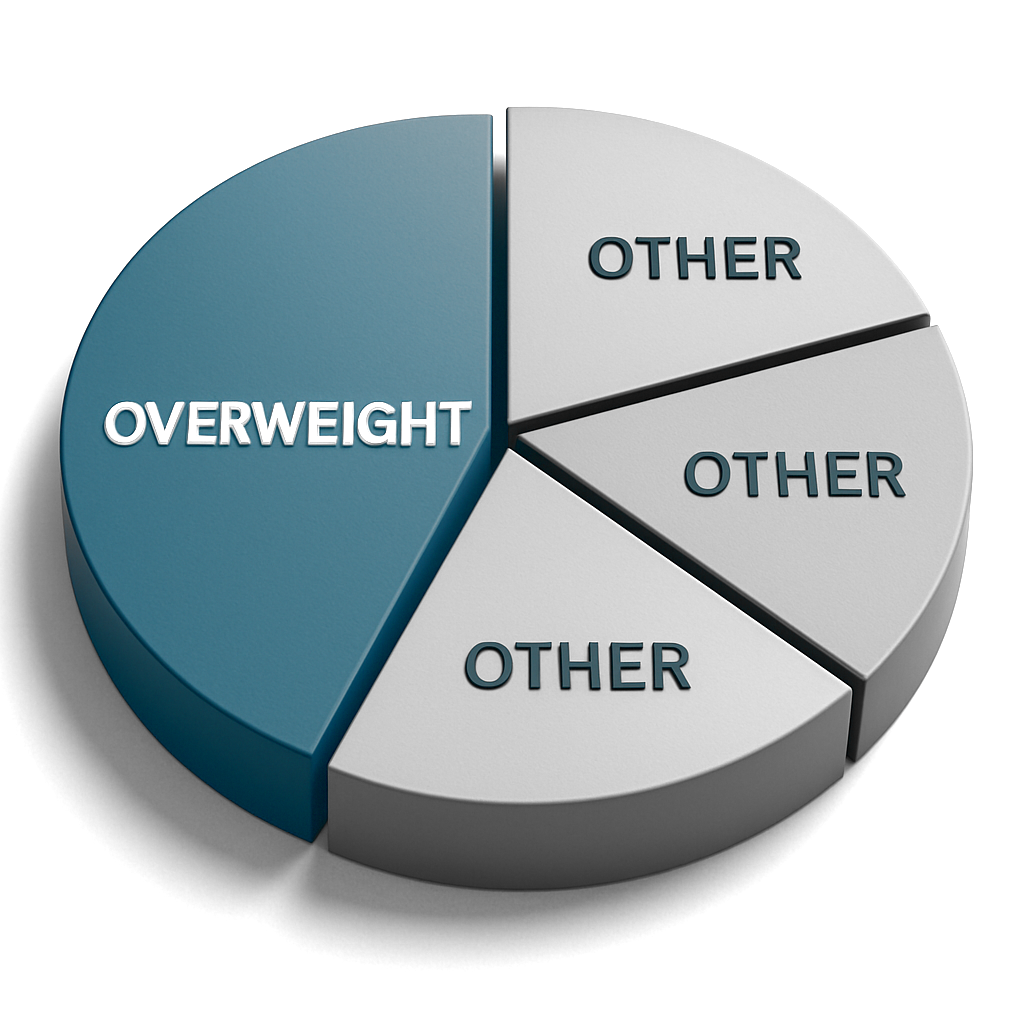
What Is an Overweight Stock?
An “overweight” stock is a term used primarily by analysts to indicate a favorable outlook on a particular stock relative to a benchmark index or sector. It suggests that the stock is expected to outperform the market average or its peers in the near to medium term. The term doesn’t reflect the stock’s physical size or volume, but rather its recommended weighting in a portfolio.
Overweight vs. Underweight vs. Equal Weight
To understand “overweight,” it’s important to compare it to its counterparts:
| Rating | Meaning |
| Overweight | Expected to outperform; suggests increasing exposure |
| Equal Weight | Expected to perform in line with the market/benchmark |
| Underweight | Expected to underperform; suggests reducing exposure |
These labels are typically used in relation to how a stock should be weighted in a model portfolio.
Analyst vs. Portfolio Interpretation
In the analyst context, overweight means a recommendation to allocate more capital to a specific stock. In the portfolio management context, it refers to a stock or sector comprising a higher proportion of a portfolio than its weight in the benchmark index.
Why Do Analysts Label Stocks as Overweight?
Role of Benchmarks in Ratings
Analysts assess how a stock compares to a benchmark index such as the Nifty 50 or S&P 500. If a stock has stronger fundamentals, growth potential, or momentum than the benchmark average, it may receive an “overweight” rating.
Price Targets and Future Outlook
Overweight ratings often come with a price target—an estimate of the stock’s potential value in a given timeframe. These targets are derived from a combination of valuation models, earnings projections, and market sentiment analysis.
Implications for Institutional and Retail Investors
Institutional investors may adjust their portfolio weightings based on these ratings, while retail investors often use them as guidance. However, the actual impact depends on how influential the rating institution is.
Example: How an Overweight Rating Works
Hypothetical Scenario
Imagine a fund benchmarked to the Nifty 50, where stock A makes up 2% of the index. If an analyst recommends an overweight of stock A, they may suggest holding 4% of the portfolio in that stock—double its index weight.
Real-World Analyst Report Breakdown
An equity report might read:
“We initiate coverage on XYZ Ltd with an Overweight rating and a 12-month target price of ₹1,200, reflecting a 25% upside from current levels.”
Interpreting Analyst Language and Terminology
Terms like “overweight”, “neutral”, or “underperform” vary slightly across institutions. Always read the fine print to understand what the rating implies within that firm’s rating system.
Pros and Cons of Overweight Stocks
Advantages: Visibility, Momentum, Potential Returns
- Greater Return Potential: Backed by research and positive sentiment.
- Momentum Advantage: Typically chosen during bullish trends.
- Strong Fundamentals: Often financially robust companies.
Disadvantages: Subjectivity, Risk, Concentration Issues
- Analyst Bias: Ratings can be influenced by subjective assumptions.
- Reduced Diversification: Overweighting too many stocks can skew risk.
- Volatility Exposure: Larger positions can amplify losses if wrong.
Overweight Stocks in Portfolio Strategy
Strategic Allocation Based on Ratings
Smart investors may overweight a stock in their portfolio if they believe in its growth potential, especially if the overweight recommendation aligns with their own analysis.
Balancing Overweight Positions with Risk Management
While overweighting may boost returns, it must be balanced with stop-losses, risk assessments, and proper asset allocation strategies.
Overweight in Sector vs. Individual Stock Context
You can overweight:
- A sector: e.g., Technology during an innovation cycle
- A stock: e.g., Reliance Industries if outperforming sector peers
Analyst Ratings: How Much Should You Rely On Them?
Analyst Qualifications and Methods
Top analysts typically hold CFA or MBA degrees and use both quantitative models (like DCF, P/E analysis) and qualitative analysis (management quality, industry trends).
Market Impact of Ratings
A rating change from a major institution can cause short-term price movements due to its influence, especially among institutional traders. Additionally, social trading allows retail investors to observe and replicate trades based on analyst ratings, providing further insights into market reactions.
Becoming Your Own Analyst: Tools and Tips
- Use screeners (like Screener.in or TradingView)
- Study earnings reports and sector trends
- Track economic indicators impacting the stock
Conclusion: Making Sense of Overweight Stock Ratings
An “overweight” stock rating is a signal—not a guarantee. It’s rooted in research and expectations, but investors should combine it with their own analysis, considering risk tolerance, investment horizon, and broader market trends. Used wisely, it can be a valuable tool in constructing and rebalancing a smart portfolio.
FAQs on Overweight Stocks
Does overweight mean a stock will rise?
Not necessarily. It means the stock is expected to outperform the benchmark, but it’s still subject to market risks.
Is overweight a buy recommendation?
Yes, in most rating systems, overweight is a positive signal, often equivalent to “buy.”
Can a stock be overweight and still fall?
Absolutely. Market corrections, earnings misses, or macro events can cause declines despite positive ratings.
How often are overweight ratings updated?
They’re usually revised quarterly or after major news/events, such as earnings releases or policy changes.
Are overweight stocks safe for beginners?
They can be, if part of a diversified approach. Beginners should still perform basic due diligence or consult financial advisors.
